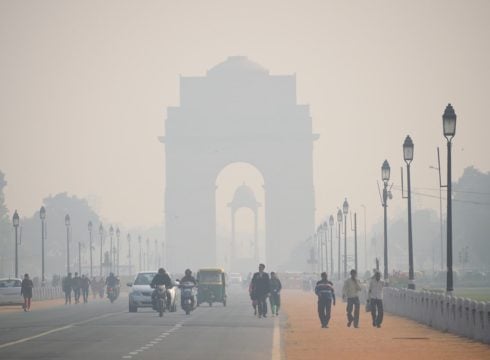SUMMARY
• Niti Aayog's Breathe India plan targets the 10 most polluted cities in India
• A 15-point action plan has been developed to address air pollution in the cities
• The cities are Kanpur, Faridabad, Gaya, Varanasi, Patna, Delhi, Lucknow, Agra, Gurugram and Muzaffarpur.
Inc42 Daily Brief
Stay Ahead With Daily News & Analysis on India’s Tech & Startup Economy
With winter smog becoming a major health hazard every year in cities across India, Niti Aayog has developed a 15-point action plan called Breathe India for the 10 most polluted cities in India.
The cities that have been identified are Kanpur, Faridabad, Gaya, Varanasi, Patna, Delhi, Lucknow, Agra, Gurugram and Muzaffarpur.
Once the campaign is approved and implemented in the identified cities, it could further be replicated in other parts of the country.
Niti Aayog has proposed to address the air pollution problem by prohibiting transition traffic in these cities and phasing out private diesel vehicles by 2022.
Some of the points of Breathe India action plan are:
- Survey and analyse power plants around the most polluted cities to prioritise their decommissioning in the next five years
- Electrify last-mile connectivity by 2022, including public transport, taxis and three-wheelers
- Revamp the regulatory framework around industrial air pollution. A three-pronged approach needs to be taken, which includes revising standards and practices, improving the audit process, and incentivising law enforcement
- Introduce a market-based instrument within a regulatory framework based on the concept of ‘polluters pay’
- Establish smog-free towers at all major construction sites by 2019
- Incentivise procurement and utilization of crop residue
- Implement a policy on landfill taxes and incentivise waste processing over landfilling by 2019
- Mandate compulsory mechanised dust removal in the most polluted cities by 2019
- Undertake measures to prevent forest fires
- Implement policy on mandatory use of cleaner forms of cooking to reduce indoor air pollution
- Develop stakeholder-specific awareness campaigns in these cities to ensure that all participants are aware of the impacts of air pollution and the repercussions of engaging in pollution-causing activities
- Define city-level plans with clear timelines and emission targets across various sources of pollution (construction, vehicular, indoor) by the end of 2018
- Establish accurate and comprehensive air quality monitoring systems in the worst affected cities by 2019
The action plan draft also emphasised that according to a report entitled ‘Health of the Nation’s States’, household air pollution was responsible for 5% of the total disease burden in India in 2016 while outdoor air pollution was responsible for 6% of the burden.
With immediate as well as long-term plans to tackle air pollution, the Niti Aayog believes that such a comprehensive approach will enable sustainable solutions for fighting air pollution.
Note: We at Inc42 take our ethics very seriously. More information about it can be found here.


